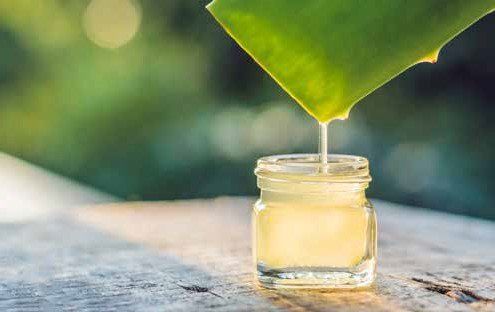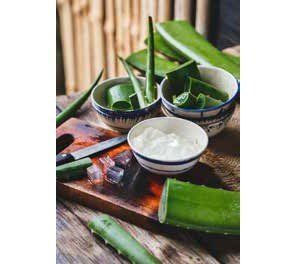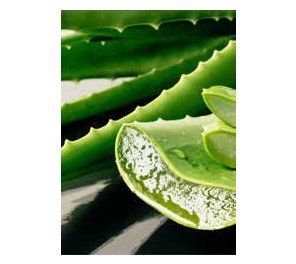Detox: Feeling Better with Aloe Vera
Interested in detoxing? First, do your best to limit the most harmful chemicals. Then you want to unblock your body’s natural detox channels and build up defenses through good nutrition, bowel regularity, a few key supplements and exercise. Maintaining indoor plants can also help filter out environmental toxins in the air. Do your best to avoid environmental toxins, such as:
- Synthetic fragrances found in laundry detergents, dryer sheets, cleaning products, plug-in and aerosol fragrances; Teflon-coated cooking pans, microwaved plastic containers and vehicle pollution.
- Unfiltered public water, chemical pesticide-treated produce, chemically fertilized produce, irradiated foods and foods fried in rancid oils.
Detox and Cleansing Choices
Herbs have been used to safely support health for thousands of years. Yet with hundreds of herbs to choose from, it can be a little overwhelming.
One foundational herb I find to be most helpful is Aloe Vera. When concentrated, it can be a powerful tool to detox the body and strengthen immunity. At the right dilution, it can even be taken daily for those interested in supporting digestion, regularity, energy, skin, allergies and balancing an over active immune system.
- Herb Choices - whole leaf Aloe Vera (concentrated with ActivAloe is best), Milk Thistle seed, Burdock root, Turkey Rhubarb root, Pau d’Arco (inner bark), Red Clover tops, Dandelion leaf & root, Slippery Elm and more.
- Food Choices – Consider parsley, cilantro, garlic, onions, celery, cucumbers, radishes, artichoke, alfalfa, greens, carrots, broccoli, watermelon, grapes, apples, papayas, and more. It’s hard to go wrong in an organic produce department!
- Lifestyle Choices – Choose healthy foods, avoid excess toxins and chemicals, exercise 30 – 45 minutes several days a week, improve bowel regularity, drink 6 – 8 glasses of clean water, expose yourself to 15 minutes of morning sunshine or use a full spectrum light.
In addition to herbs, consuming foods that contain essential phytonutrients and fiber contributes to cleansing, repair and protection of the body. Adding a few particular supplements may also support a faster and healthier detox. Some favorites include N-Acetyl- Cysteine (NAC), CoQ10 enzyme, vitamin A, B-complex, B12, Niacin, vitamin C, vitamin E and minerals. A full range of minerals are found in abundance in a good daily greens product and through eating more green veggies. Both sources contain plant chlorophyll which contributes to detoxification.
Why is Aloe Vera a Great Detox Herb?
Aloe Vera is a multi-tasking herb and has very little contraindication for use.* It is also easy to take in juice, water or as a tablet. The plant contains over 100 active elements and phytonutrients that help orchestrate hundreds of functions in the body.
There’s a big difference in Aloe Vera products on the market. When a product contains the whole leaf, including its highly medicinal, dark yellow sap, it works more effectively. In fact, concentrated products that display the ActivAloe trademark are trusted to support all of the pathways to body wellness (1). Whole leaf Aloe Vera, containing bitter yellow sap, supports pH balancing, reduces fungal overgrowth and improves absorption of foods and supplements. This is due to the Bioavailability Factor and is also why many people begin to feel more energy ingesting it daily after a short period of time.
Most people welcome the extra help it may bring for constipation. Start with less if you are already experiencing fast transit. Regularity is a critical step during detoxification and allows extra waste to be eliminated from the lymph, skin, lungs, liver and kidneys.
Karen Masterson Koch is a clinical nutritionist and health educator with over 25 years of nutritional counseling experience. She is the author of Beyond Gluten Intolerance.
*Aloe Vera is very safe to use, however, only take at mealtimes if blood sugar issues are present. Reduce the dose if diarrhea occurs. 2011, Beyond Gluten Intolerance – GIS, BookMasters, Inc., Ashland, OH, Masterson Koch, K.A, Clinical Nutritionist, pages 122-126.












